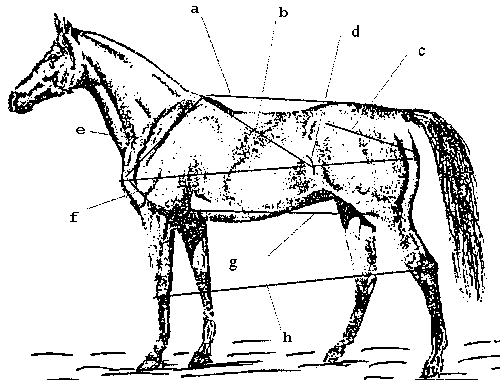A: Thoroughbred and Arabian s stallions must have exceptional performance records to qualify for consideration for Trakehner acceptance. (See the Exceptional Trakehner Stallion Recognition program criteria for examples of outstanding performance). Performance in disciplines other than those listed in the Exceptional Trakehner Stallion Recognition program will be considered if the horse has won at the regional and/or national level in a strenuous activity such as racing, endurance or the Olympic disciplines. Performance in halter classes and pleasure classes will not be considered. Send the results from an outside source along with the stallion’s pedigree to the ATA central office. The results will be forwarded to the Inspection Committee and you will be notified if the stallion qualifies for inspection. If he qualifies you will need to complete an inspection application and submit it along with the $650 inspection fee. The inspection schedule will be posted on the ATA website by April 15th each year.
A: See the Recognition of Exceptional Stallions section.
A: The Stallion must perform the following:
A: No, the outstanding performance that qualified the Thoroughbred or Arabian stallion for inspection is considered the performance test.
A: No, the stallion should be competing at Preliminary or above if eventing is the discipline being used.
A: No, the program is based on performance so that the ATA can ensure that outside blood is from proven athletes that have been proven to be trainable, rideable, and athletic.
A: No, only offspring produced from Official Studbook Trakehner mares without a Thoroughbred or Arabian parent will be eligible for Official Registry Book registration.
A: Horses must be 50% Trakehner blood to be eligible for registration because the ATA is based on bloodlines rather than sport horse type.
A: The recommended minimum size for a stallion is 15.3 hands.
A: No, ATA awards and recognition programs are for Trakehner horses only.
A: The ATA is looking for Thoroughbred and Arabian sires that have outstanding performance to improve the Trakehner breed as outcross sires to produce breeding stock and sport horses. We recommend that you purchase Dr. Robert Baird’s booklet, Conformation and the Sport Horse Breeder. Dr. Robert Baird is a former chairman of the ATA Inspection Committee and Chef d’Equipe of the Canadian Olympic Team. His booklet explains in detail what the Inspectors are looking for in breeding stock. The booklet is available through the ATA central office for $7.50 plus $1.00 shipping and handling.
A: The scoring system is the Olympic scoring system. The scores are shorthand for words. Pilot program Minimum acceptance score for Thoroughbred and Arabian stallions is 60 points from a possible 80. The numerical scores describe the following words.
10 – Excellent
9 – Very Good
8 – Good
7 – Fairly Good
6 – Satisfactory
5 – Marginal
4 – Insufficient
3- Fairly Poor
2 – Poor
1- Very Poor
0 – Not Scored
A: Yes. You must wait a minimum of one year from the time he was originally inspected and pay a fee of $1,000. The second decision is final.
A: Yes, the ATA conducts random drug tests at inspections. All substances forbidden by USEF and/or CEF are also prohibited by ATA. Please check their websites for a list.
A: The final element is gradually raised to 3.75 feet. The first two elements are fixed to set up the final jump. More information on free jump chute layout is available on the Library/FAQ’s page
A: Usually the Committee wants to see the stallions jump at all three heights listed in the Free Jumping Protocol.
A: Yes, all stallions must be presented in the same manner. See Free Jumping Protocol
A: The stallion is presented in dressage tack and is directed to perform the walk, trot, canter in both directions and execute 20-meter circles to demonstrate willingness and ride-ability.
A: All stallions of a particular age group will be in the ring together to demonstrate tractability under saddle in a setting similar to competition atmospheres.
A: The Under Saddle Phase will continue when the stallions have been brought back under control.
A: No, but if the stallion is approved you must maintain an active membership to keep the stallion in good standing.
A: The Committee must judge what they see in person on the day of inspection. Videotapes are not helpful in this process. You may wish to bring several of the stallion’s offspring in person to aid the Committee in determining the stallion’s suitability for acceptance.

a – the back (withers to peak of croup)
b – the body (point of shoulder to point of buttock)
c – the pelvis (point of hip to point of buttock)
d – the rib length (withers to last rib)
e – the shoulder (withers to point of shoulder)
f – the arm (point of shoulder to point of elbow)
g – the elbow to the stifle
h – the knee to the hock